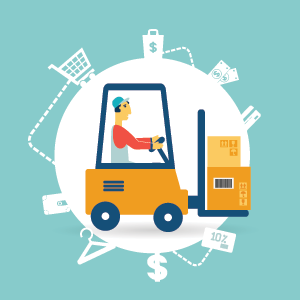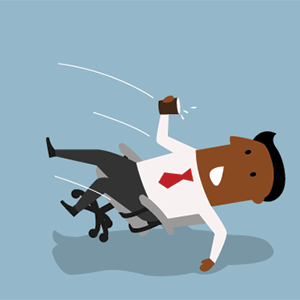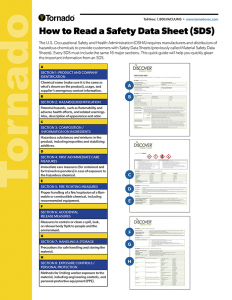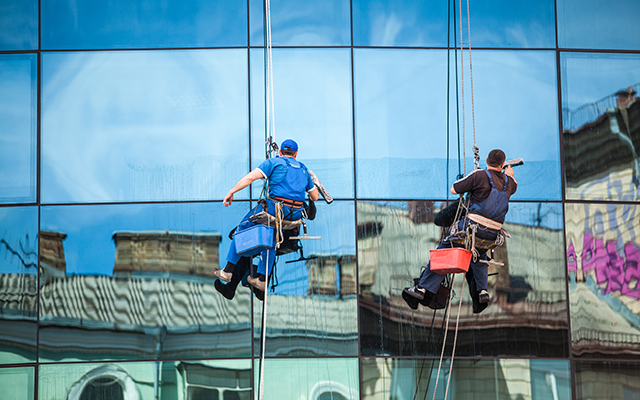Safety Basics: Tips for Keeping Your Building Accident Free
Janitors are supposed to make a building safer. If not carefully performed, however, cleaning work has the potential to create hazards. That’s why facility and housekeeping managers spend so much time thinking about protecting custodians and building occupants.
Five industries account for 20 percent of all occupational accidents and injuries in this country, according to the US Bureau of Labor Statistics, and janitorial is among them. A University of Washington study found there are 10.4 injury claims per 100 cleaning staff workers each year—twice the rate of other service industries. If you factor in the many accidents that go unreported, the true number is likely much higher.
The High Cost of Accidents
When accidents happen in a building, everyone suffers. Aside from the pain, inconvenience, and financial hardship of the victim, workplace accidents raise the specters of liability, workers’ compensation, and insurance battles.
 An accident doesn’t need to be catastrophic to have a huge impact on a business. Even a minor incident, if found to have been caused by negligence, puts employers and/or building owners at risk of citations and fines from the Occupational Safety and Health Administration (OSHA) and expensive lawsuits.
An accident doesn’t need to be catastrophic to have a huge impact on a business. Even a minor incident, if found to have been caused by negligence, puts employers and/or building owners at risk of citations and fines from the Occupational Safety and Health Administration (OSHA) and expensive lawsuits.
The annual costs of work-related injuries just in worker’s compensation claims is $61.88 billion, according to a recent Liberty Mutual Workplace Safety Index. The most common injuries were slip-and-fall accidents, which cost businesses $15.4 billion, and overexertion from lifting, pushing, pulling, holding, carrying, or throwing objects at $15.08 billion.
What You Can Do
As a BSC, head of housekeeping or facility manager, the safety of cleaning staff and building occupants is your responsibility. While you can’t be everywhere all the time, there are things you can do to create a safe culture in your building.
1. Provide comprehensive training
In one study, 54 percent of janitorial workers who filed compensable claims had spent less than one year on the job before being injured. Inexperience is likely a serious contributor to cleaning accidents, so it pays to educate new hires.
Turn to your distributors and manufacturers for help. They typically provide training on their products (and often on best cleaning practices in general) for free or for a fee. Ongoing training is the best way to keep workers safe, and even the most experienced workers will benefit.
Also of note: Nearly one-third of janitors filing compensation claims request materials in another language (primarily Spanish). Providing training in workers’ native languages is another smart tactic.
2. Promote employee health
The reality is, most cleaning work happens after hours and many janitors have second jobs. Sleep deprivation is a real hazard because tired people have more accidents. While many of the factors affecting sleepiness are outside your control, providing sufficient breaks and encouraging workers to get adequate rest and nutrition goes a long way.
You may not have the budget for perks like yoga or massages, but basic ergonomics should certainly be a priority. Teach workers to how to lift safely, how to avoid repetitive motion injuries, and how to prevent overexertion in the form of strains and sprains. Don’t rely on a poster or pamphlet; an in-person workshop delivers more powerful results.
3. Make smart equipment choices
Ergonomics is more than lifting with your knees. The tools you ask your workers to use on a daily basis can have a huge affect on accident and injury rates.
 Switching from an older model, heavy, upright vacuum to a new, modern design, or to a lightweight backpack model can greatly reduce arm, shoulder, and back injuries. Well-maintained housekeeping carts that roll easily when loaded are another smart investment. Likewise, choose mops with ergonomic handles and lightweight microfiber heads, bottom-draining buckets, and no-touch cleaning systems to cut down on injuries.
Switching from an older model, heavy, upright vacuum to a new, modern design, or to a lightweight backpack model can greatly reduce arm, shoulder, and back injuries. Well-maintained housekeeping carts that roll easily when loaded are another smart investment. Likewise, choose mops with ergonomic handles and lightweight microfiber heads, bottom-draining buckets, and no-touch cleaning systems to cut down on injuries.
Also, corded equipment poses a slip-and-fall danger for both workers and building occupants. One trip over a vacuum or floor polisher cord can cause sprains or broken bones. Careful handling is one way to reduce the risk, but choosing battery-powered equipment can eliminate it.
4. Pay attention to chemical handling and storage
Burns and other injuries involving hazardous chemicals are terrible, but all too common among cleaning staff. Many of these incidents could be avoided with a little training and some simple precautions.
Provide personal protective equipment (PPE), such as gloves and goggles, for anyone handling chemicals, and be relentless about ensuring they’re worn every time. Automated dilution stations are another smart safety investment. They drastically reduce the opportunity for chemical accidents during routine handling. Finally, evaluate how you store dangerous chemicals—is everything labeled, is there adequate ventilation, and are things locked when not in use?
Safety Data Sheets should also be kept on hand for all potentially hazardous materials. Make sure employees know how to read these important documents by downloading our free guide, “How to Read an SDS.”
5. Watch out for water
Water can be as dangerous as a caustic cleaning chemical. Wet floors and icy sidewalks are a major contributor to the huge number of slip-and-fall accidents that occur in the workplace.
 Try to schedule floor cleaning at lower-traffic times. If you must mop while people are around, or if you’re dealing with a spill, always use warning signs and consider using an air mover to reduce drying time.
Try to schedule floor cleaning at lower-traffic times. If you must mop while people are around, or if you’re dealing with a spill, always use warning signs and consider using an air mover to reduce drying time.
Also, don’t skimp on salt when there’s a chance of freezing. Several feet of walk-off matting outside and immediately inside the entrance will reduce the amount of water tracked onto your floors. The matting will also add the benefit of protecting your floors from the effects of all the salt that you laid down as well.
6. Pay attention to health issues
Bloodborne pathogens are a concern for cleaners, not only in hospitals and other healthcare facilities, but in the everyday cleaning of kitchens and bathrooms, or when cleaning up after an accident. It’s your responsibility to offer training on how to prevent exposure to bloodborne pathogens and to provide PPE to help limit exposure. If you operate in a high-risk environment, such as a hospital, you may want to offer free Hepatitis B vaccinations to your staff.
With so much to oversee and get done each day, it can be a challenge to stay vigilant about safety. Given the potential costs, however, it needs to a priority—no matter what. Taking every precaution to protect the people who use and maintain your facilities is as important as keeping the building clean.
Download our Free Guide, “How to Read an SDS.”

[contact-form-7 id=”1899″ title=”SDS Download”]

